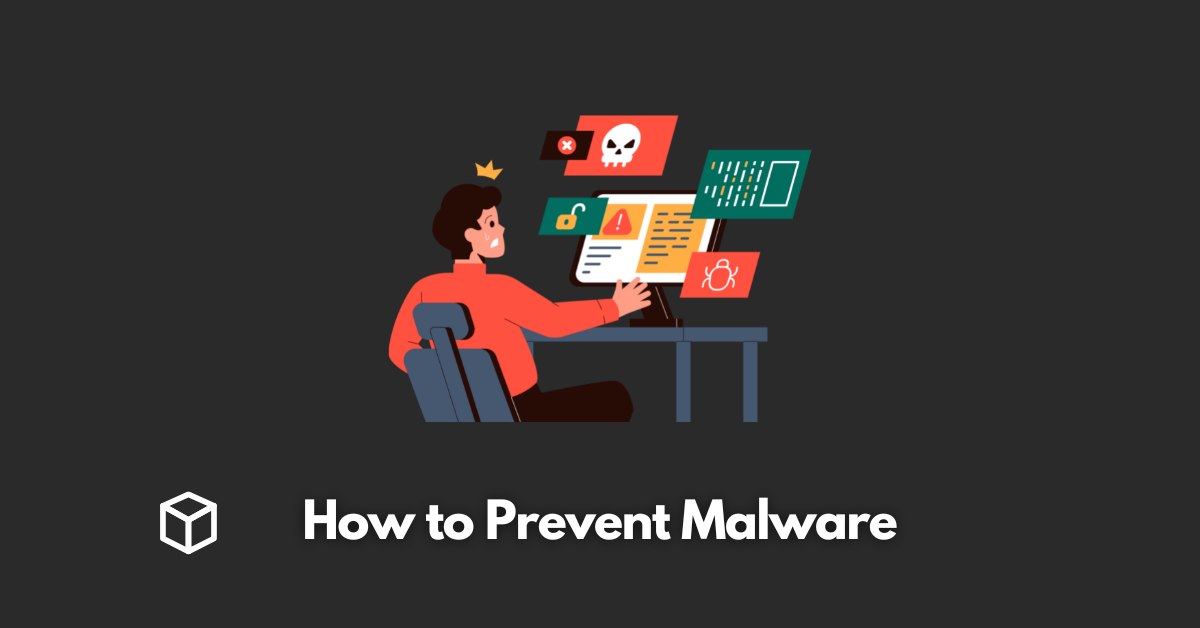Malware, short for malicious software, is any software designed to harm or exploit a computer or device.
It can come in many forms, such as viruses, spyware, ransomware, and more.
With the increasing number of cyber threats, it’s crucial to take the necessary steps to protect your computer and personal information from malware attacks.
In this article, we’ll cover the main types of malware and their effects, as well as provide tips and best practices for preventing malware infections.
Understanding Malware
Before we dive into the steps you can take to prevent malware infections, it’s important to understand the different types of malware and their effects.
- Viruses: A virus is a type of malware that attaches itself to a legitimate program or file and replicates itself. Once a computer is infected with a virus, it can spread to other computers and cause damage to the infected computer’s files and programs.
- Spyware: Spyware is a type of malware that is designed to collect personal information without your knowledge. It can track your online activities, steal personal information such as login credentials and credit card numbers, and even control your computer remotely.
- Ransomware: Ransomware is a type of malware that encrypts your files and demands a ransom in exchange for the decryption key. This type of malware can cause significant damage as it can lock you out of your own files and leave you with the difficult decision of paying the ransom or losing access to your files permanently.
- Adware: Adware is a type of malware that displays unwanted advertisements on your computer. This type of malware is often bundled with free software and can be difficult to remove.
- Trojan: A Trojan is a type of malware that disguises itself as a legitimate program or file. Once a computer is infected with a Trojan, it can give cybercriminals access to the infected computer and allow them to steal personal information or control the computer remotely.
Keeping Software Up to Date
One of the most effective ways to prevent malware infections is by keeping all of your software up to date.
Software updates often include security patches that fix vulnerabilities that malware could exploit.
This means that by keeping your operating system, software programs, and browser plugins up to date, you’re closing potential entry points for malware.
To ensure your software is always up to date, you can set up automatic updates or create reminders to check for updates manually.
Many software programs also offer notifications when updates are available.
It’s also important to note that outdated software is not only more vulnerable to malware but also other types of cyber threats such as hacking.
A software that is not updated may contain bugs and glitches that could be exploited by cybercriminals, leading to a security breach.
Using Antivirus and Anti-Malware Software
Another essential step in preventing malware infections is by using antivirus and anti-malware software.
These programs can detect and remove malware that has already infected your computer, as well as prevent new infections from occurring.
When choosing antivirus and anti-malware software, it’s important to select a reputable program that offers real-time protection, regular updates, and a variety of scanning options.
It’s also a good idea to have more than one program installed as they will have different features and will be able to detect different types of malware.
In addition to the above, it’s also important to have a firewall enabled on your computer.
A firewall acts as a barrier between your computer and the internet, blocking unauthorized access and preventing malware from communicating with its command and control server.
Being Careful with Email Attachments and Links
Email attachments and links can also be a common way for malware to spread. Cybercriminals often use phishing emails to trick people into opening malicious attachments or links.
To protect yourself, be wary of unexpected emails from unknown senders and avoid clicking on links from suspicious emails.
It’s also a good idea to hover over links to see the destination URL before clicking on them.
This will give you an idea of where the link is taking you, and whether or not it’s a legitimate site.
Additionally, be cautious of emails from unknown sources that ask for personal information or login credentials. Legitimate organizations will never ask for such information via email.
Being Careful with Downloads
Downloads can also be a way for malware to infect your computer.
To protect yourself, only download software from reputable sources, such as the official website of the software developer or a trusted app store.
It’s also a good idea to scan downloads with antivirus software before opening them.
Another important tip is to avoid downloading pirated software as they often come bundled with malware. Not only is it illegal, but it’s also a huge security risk.
Avoiding Public Wi-Fi Networks
Public Wi-Fi networks can be a security risk because they’re often unsecured and can be easily accessed by cybercriminals.
To protect yourself when using public Wi-Fi, consider using a virtual private network (VPN) to encrypt your internet connection.
Additionally, avoid sensitive activities, such as online banking, when using public Wi-Fi.
Conclusion
In conclusion, malware is a serious threat to the security of your computer and personal information.
By keeping your software up to date, using antivirus and anti-malware software, being careful with email attachments and links, being careful with downloads, and avoiding public Wi-Fi networks, you can greatly reduce the risk of a malware infection.
Remember to stay vigilant and take the necessary steps to protect yourself from cyber threats.
Share this post with friends and family to help raise awareness about the importance of preventing malware.





